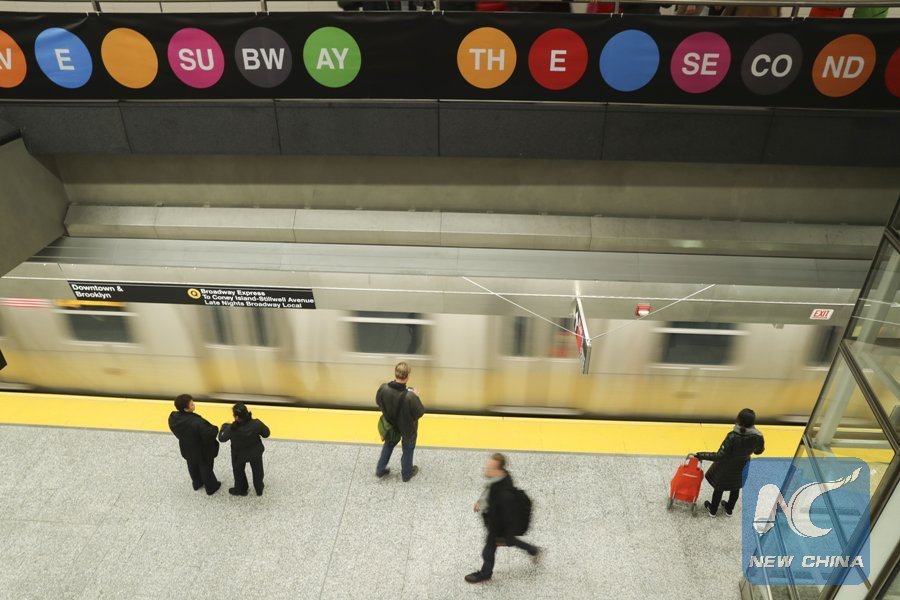
People wait on the platform for trains at the newly-launched 72th street Station in New York, the United States, Jan. 4, 2016. (Xinhua/Wang Ying)
by Xinhua writer Yang Shilong
NEW YORK, Jan. 5 (Xinhua) -- For Candy Tong, Miss Dance of California, there would be no other stage as luxurious as the platform of New York's 4.45-billion-U.S.dollar brand new subway that has been dreamed of since 1920s.
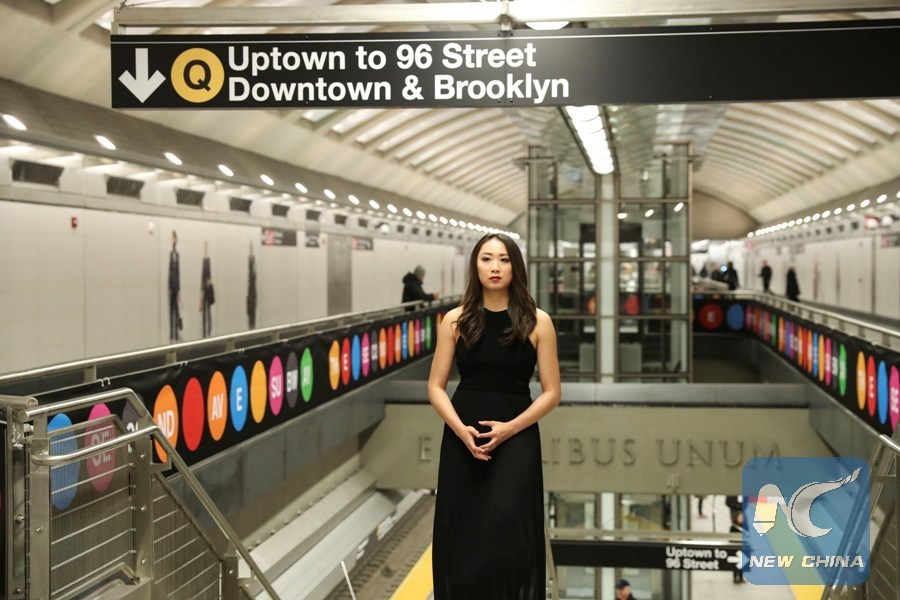
Candy Tong is standing on the platform at the newly-launched 72th street Station in New York, the United States, Jan. 4, 2016. (Xinhua/Wang Ying)
Tong, who won the top award from the Dance Masters of California in 2013, was showcasing her pleasantly stunning ballet actions Wednesday morning at the 72nd St. subway station, one of the three new stations of the Phase 1 of the Second Avenue Subway, opened for service on the New Year's Day.
"It's new and modern, a good place to do photograph." Melika Dez, a renowned dance photographer from Montreal, Canada, told Xinhua after catching satisfactory shots of Tong's moments of beauty.
Dez is the winner of "Best Short Movie" at the 2005 Festival du Nouveau Cinema in Montreal and awarded with the "People's Choice" on Silence On Court in 2005 for her graduation short-movie project.
"Here is so clean and bright, totally different from the city's dark old subway lines, where rats thrive on garbage along the train track." added Tong's mother, who is originally from Hong Kong.
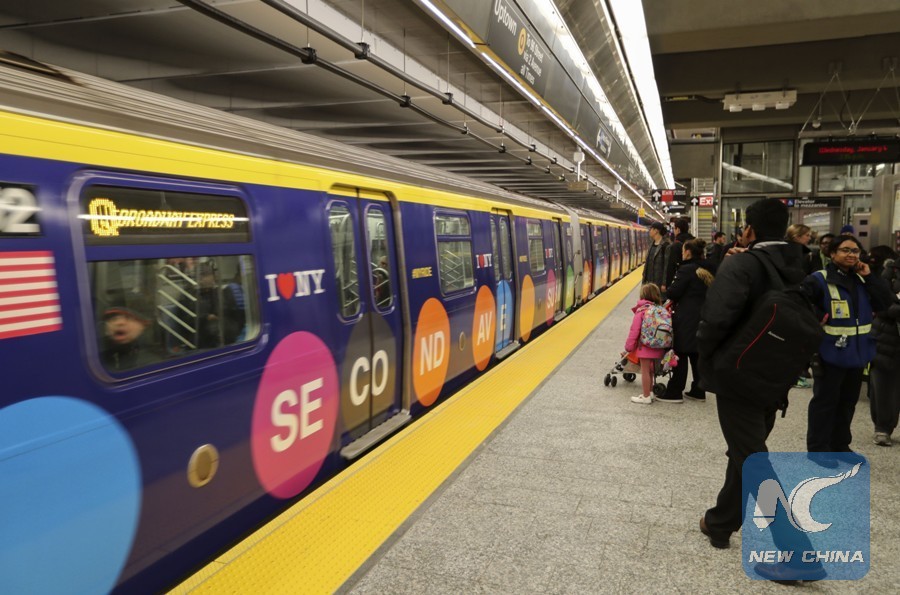
People wait to get into subway train at the newly-launched 72th street Station in New York, the United States, Jan. 4, 2016. (Xinhua/Wang Ying)
New York's biggest expansion of the subway system in 50 years, the nearly 2-mile (about 3.2 kms) segment under the Upper East Side of the Manhattan is an extension of the Q line and seen as crucial to alleviating congestion in the nation's biggest subway system.
The new line, when complete, extends 8.5 miles (13.6 kms) along Manhattan's East Side to Lower Manhattan. It is to be built in three phases and expected to carry about 200,000 riders a day, according to the Metropolitan Transportation Authority (MTA), a public benefit corporation responsible for public transportation in New York.
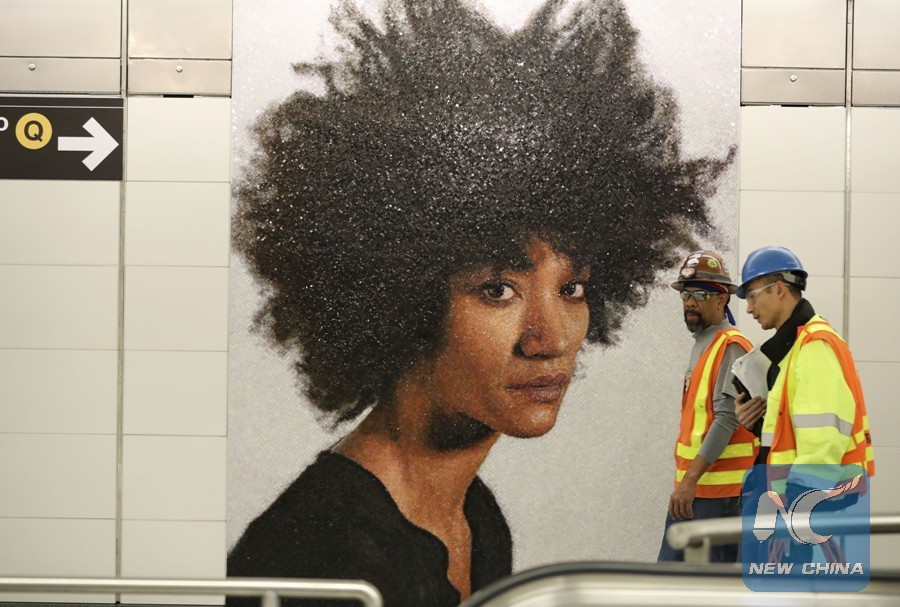
Workers walk past a wall paint at the newly-launched 86th street Station in New York, the United States, Jan. 4, 2016. (Xinhua/Wang Ying)
The city first envisioned a Second Avenue subway in 1929, but the plan was derailed by the stock market crash and the Great Depression. Ground was broken in 1972, but the project was put on hold again by the city's fiscal crisis.
After that, the Second Avenue subway remained mostly just on paper until tunneling began in earnest in 2007. The newly opened section was initially supposed to be completed in 2013.
"It's a nice project though long overdue," said Stephen Trychon with JF White Construction.
The spacious new stations, installed with escalators and elevators, are a lot more friendly to visitors, especially seniors, than those smelly, crowded ones along the old lines.
More appealingly, the 72 st., 86 st.,and 96 st. stations are turned into underground museum with large-scale installations of vibrant artworks, commissioned by MTA at a cost of 4.5 million U.S. dollars.
The artworks, mostly concentrated on the second mezzanine of each two-tiered station, includes 12 nearly-9-feet (2.7 meters) high densely intricate mosaic portraits created by the famous American painter and photographer Chuck Close. Among the portraits is one of the Chinese artist Zhang Huan, born in 1965 in Anyang, Henan Province.
However, the staggering cost of the new line already sparked many concerns. The next phase of the Second Avenue subway is reportedly to cost 6 billion dollars.
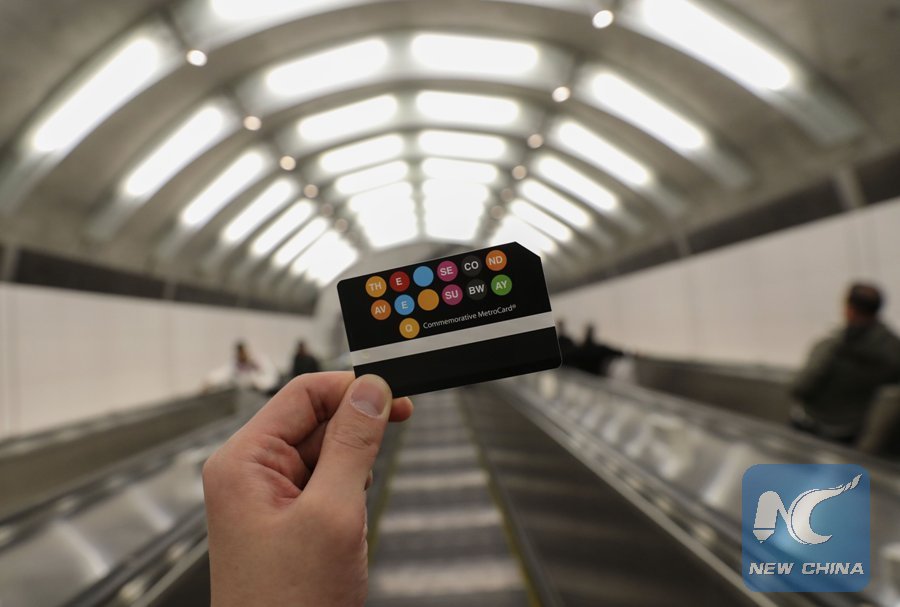
Photo taken on Jan. 4, 2016 shows a specially designed metro card for the new line at the newly-launched 96th street Station in New York, the United States. (Xinhua/Wang Ying)
"NYC's brand new subway is the most expensive in the world - that's a problem," Matthew Yglesias, said in his article carried by the VOX.COM.
Yglesias wrote that according to transit blogger Alon Levy's compendium of international subway projects, Berlin's U55 line cost 250 million dollars per kilometer, Paris's Metro Line 14 cost 230 million dollars per kilometer, and Copenhagen's Circle Line cost 260 million dollars per kilometer.
In China, the subway construction costs are even lower. It costs more than 1 billion yuan (about 161 million dollars) to build one kilometer of subway in Beijing, the National Development and Reform Commission (NDRC) said in June 2015.
"But as lovely as the new stations might be, and advanced as the construction methods may have been, the Second Avenue line fails to address the subway's biggest problem," Matthew DeBord, a Business Insider senior correspondent covering transportation, said in an opinion column "Why New York's new Second Avenue subway changes nothing."
"When you enter the underground realm, you're returning to a less airbrushed and sanitized New York. The New York of the subway is emphatically real."
"The No. 1 thing that New York could do to make everyone's life better is make the subway a more pleasant environment," DeBord said.

